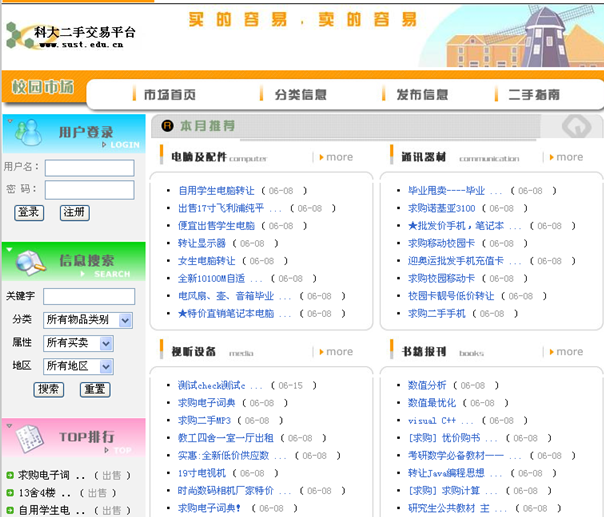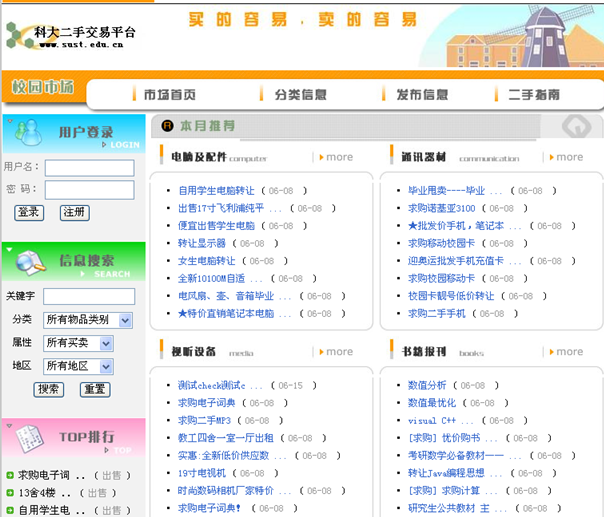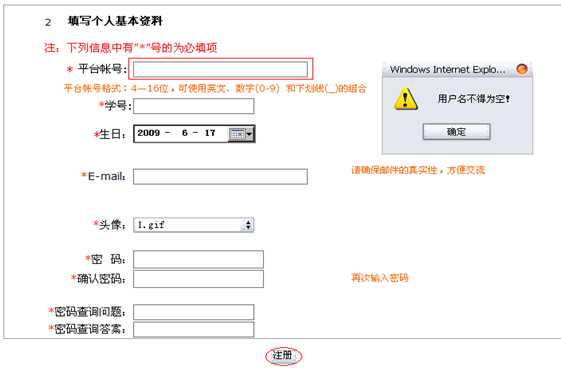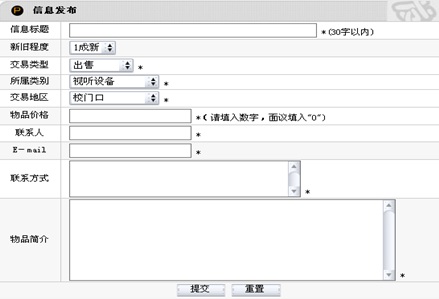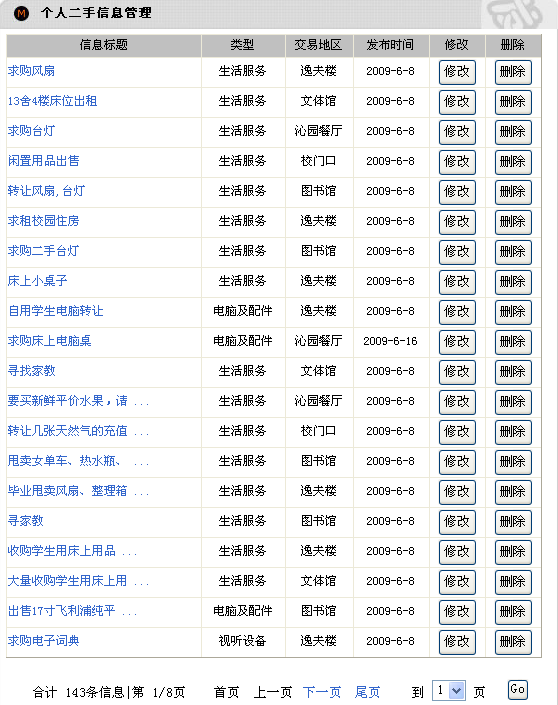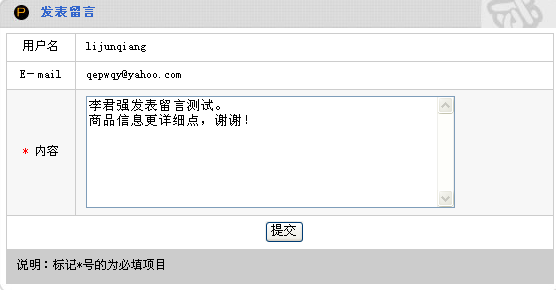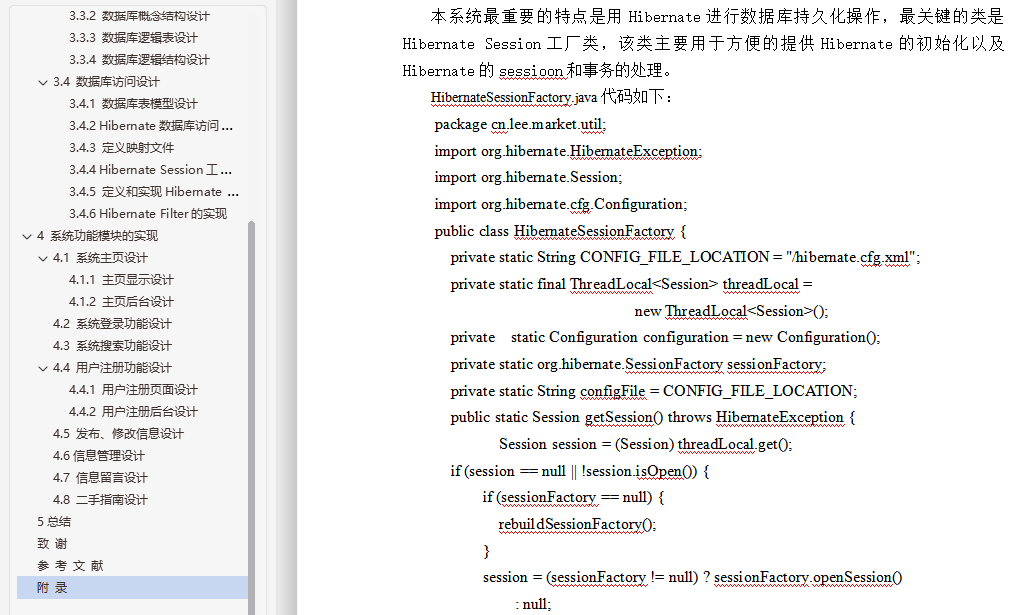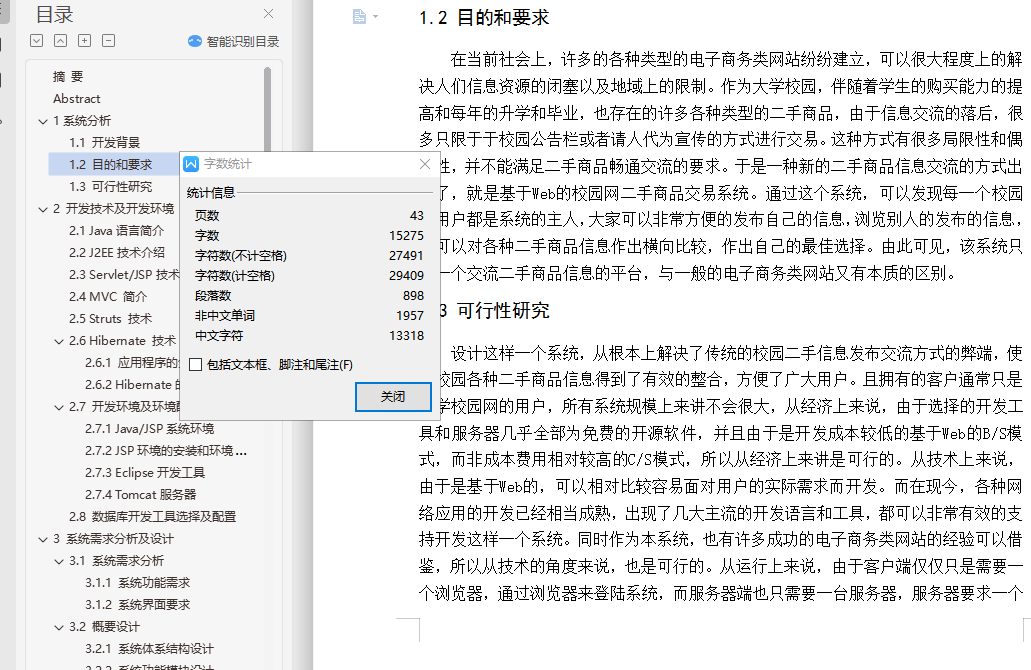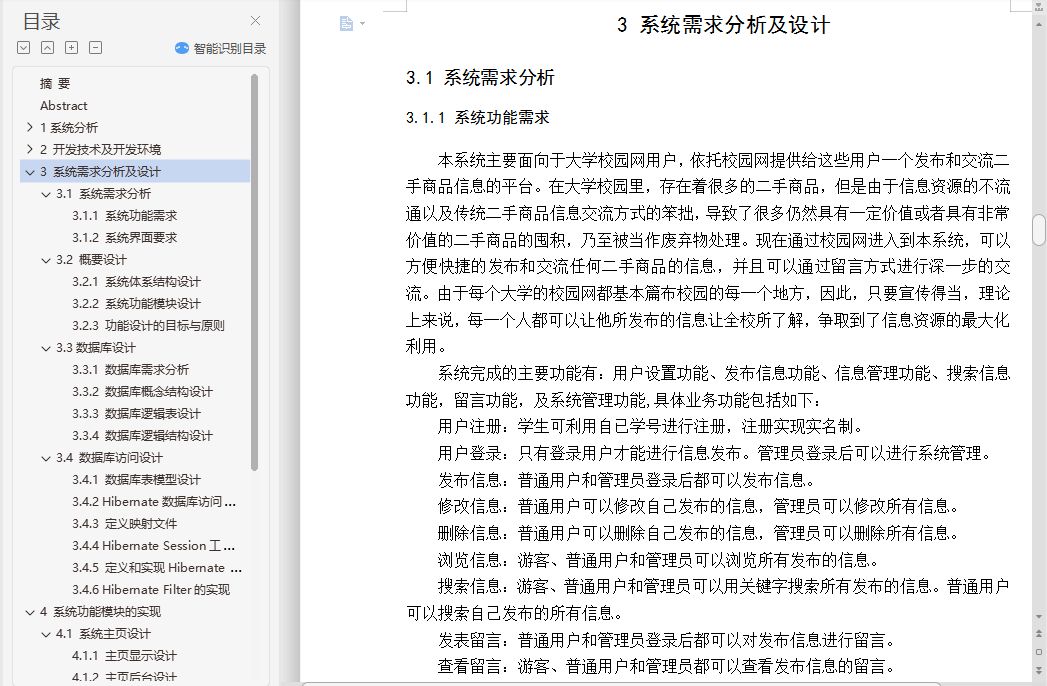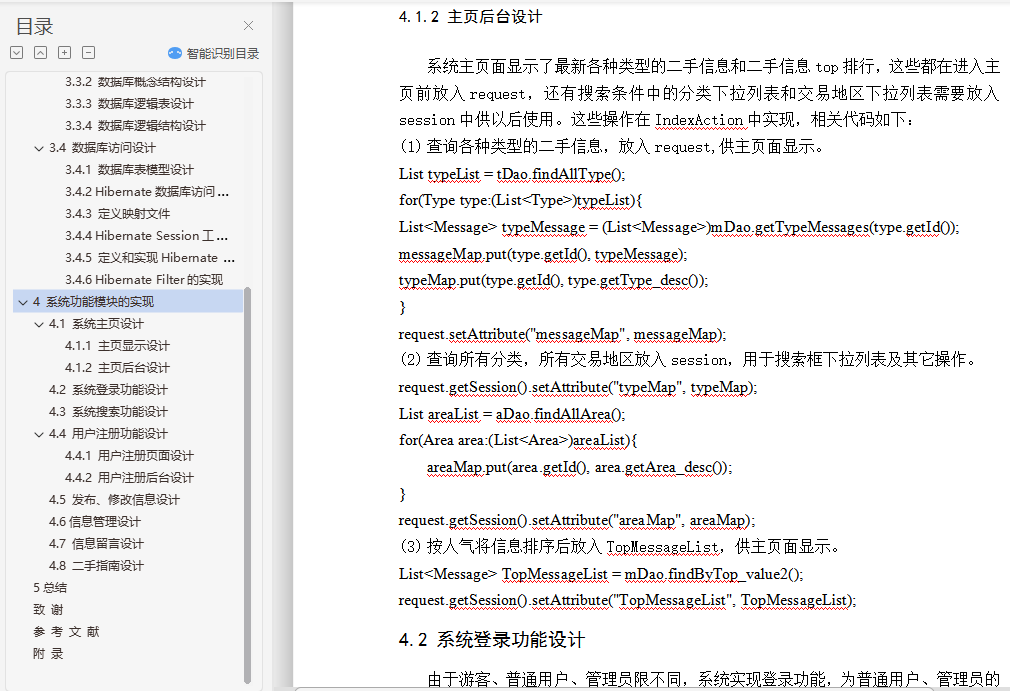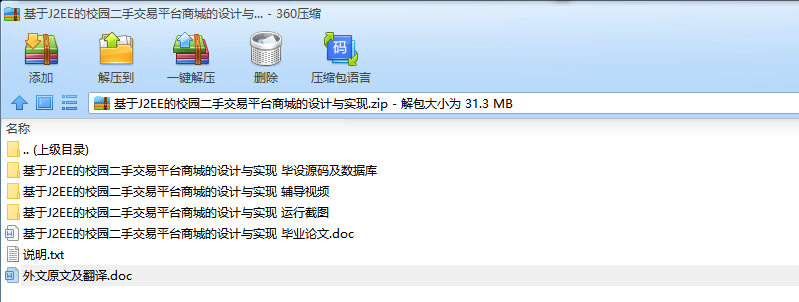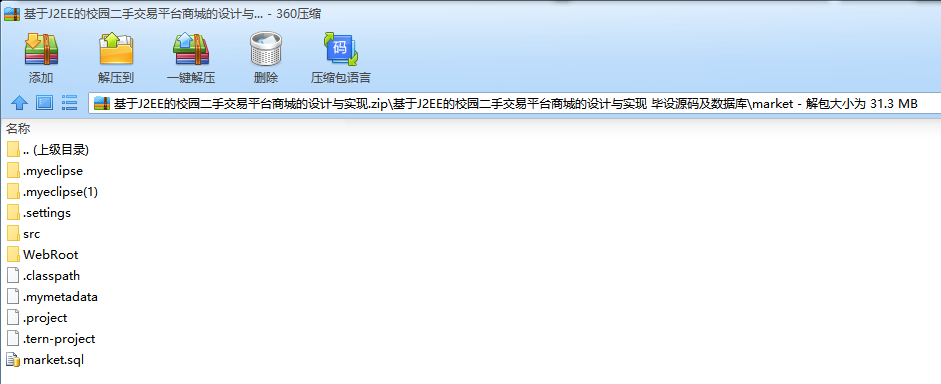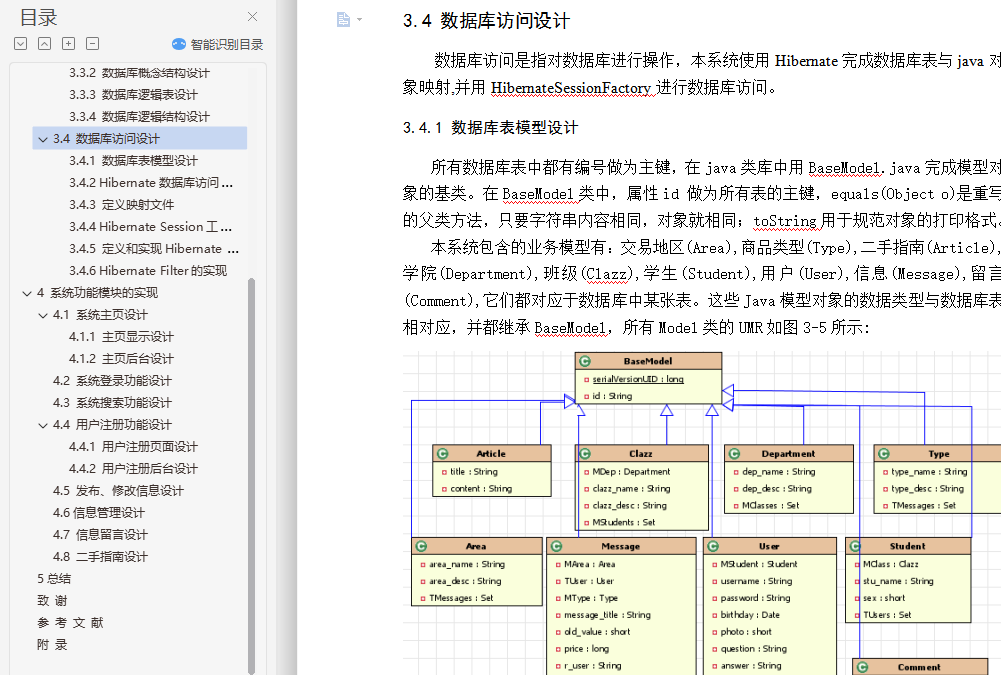基于J2EE的校园二手交易平台商城的设计与实现
摘 要
本系统采用JSP/servlet技术,是使用Java编程语言编写的一套校园网二手交易平台软件。系统采用的是最近几年流行的B/S开发模式,以互联网方式运行,服务器端只需要安装本系统,而客户端用户只要可以上网,就可以非常方便快捷的通过浏览器访问系统,浏览和发布二手交易信息,免去了传统的C/S模式下复杂的安装、配置、维护等操作。同时由于使用面向对象的Java语言,所以本系统也具有Java语言的面向对象、与平台无关、安全性高、稳定性高、多线程等特性,以及Java语言对网络编程技术的支持。使得本系统具有很高的使用价值。
系统开发采用了实现MVC模式的Web应用组件:Struts,实现数据持久化功能的ORM组件:Hibernate,用JSP+HTML+JavaScript进行界面处理,数据库采用比较稳定的MySQL 5.0,并用JDBC进行数据库访问。
关键词:JSP,Struts,Hibernate,MySQL,二手交易平台
Campus Secondhand Merchandise Platform Based on Jsp/Servlet
Abstract
This system is a set of platform software of the campus-wide system secondhand transaction. It adopts the JSP/J2EE technique, and programmed with Java programming language. It also adopts the B/S development mode, which is based on Web and popularize in recent years. It runs in internet ways. Only when the server install this system and the client can visit it, browse and release some secondhand conveniently and speedily when they go on-line. And so it dispenses with such operation as the complicated installing, installment and support in traditional C/S mode. At the same time, it uses the Java language which towards the OOP(object-oriented programming).So the system has the specific property of towarding OOP, irrelevant with the platform ,the Java language’s support to the network programming technique makes the system have high practical value.
The System using the components of Web applications: Struts to achieve MVC model, using the ORM components: Hibernate to achieve data persistence features, using JSP + HTML + JavaScript to Show page. using Relatively stable database MySQL 5.0, and use JDBC to visit.
Key words: JSP,Struts,Hibernate,MySQL,Campus Secondhand Merchandise
目 录
摘 要 I
Abstract II
1系统分析 1
1.1 开发背景 1
1.2 目的和要求 1
1.3 可行性研究 1
2 开发技术及开发环境 3
2.1 Java语言简介 3
2.2 J2EE技术介绍 3
2.3 Servlet/JSP技术 3
2.4 MVC 简介 4
2.5 Struts 技术 5
2.6 Hibernate 技术 6
2.6.1 应用程序的分层体系结构 6
2.6.2 Hibernate的应用及API简介 7
2.7 开发环境及环境配置 8
2.7.1 Java/JSP系统环境 8
2.7.2 JSP环境的安装和环境变量的设置 8
2.7.3 Eclipse开发工具 9
2.7.4 Tomcat服务器 9
2.8 数据库开发工具选择及配置 10
3 系统需求分析及设计 11
3.1 系统需求分析 11
3.1.1 系统功能需求 11
3.1.2 系统界面要求 11
3.2 概要设计 12
3.2.1 系统体系结构设计 12
3.2.2 系统功能模块设计 12
3.2.3 功能设计的目标与原则 13
3.3数据库设计 14
3.3.1 数据库需求分析 14
3.3.2 数据库概念结构设计 14
3.3.3 数据库逻辑表设计 14
3.3.4 数据库逻辑结构设计 17
3.4 数据库访问设计 18
3.4.1 数据库表模型设计 18
3.4.2 Hibernate数据库访问配置 18
3.4.3 定义映射文件 19
3.4.4 Hibernate Session工厂 22
3.4.5 定义和实现Hibernate DAO 22
3.4.6 Hibernate Filter的实现 23
4 系统功能模块的实现 25
4.1 系统主页设计 25
4.1.1 主页显示设计 25
4.1.2 主页后台设计 26
4.2 系统登录功能设计 26
4.3 系统搜索功能设计 27
4.4 用户注册功能设计 29
4.4.1 用户注册页面设计 29
4.4.2 用户注册后台设计 31
4.5 发布、修改信息设计 31
4.6信息管理设计 32
4.7 信息留言设计 33
4.8 二手指南设计 34
5总结 35
致 谢 36
参 考 文 献 37
附 录 38
